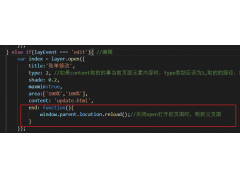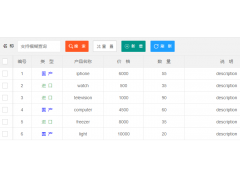Converting matplotlib png to base64 for viewing in html template(将 matplotlib png 转换为 base64 以便在 html 模板中查看)
问题描述
您好,我正在尝试按照教程制作一个简单的网络应用程序,该应用程序计算阻尼振动方程,并将结果的 png 转换为 Base64 字符串后返回到 html 页面.
Hello, I am trying to make a simple web app, following a tutorial, that calculates a dampened vibration equation and returns a png of the result to the html page after it has been converted to a Base64 string.
应用程序正常运行,只是在计算结果时返回一个损坏的图像图标,可能是因为 Base64 字符串无效.
The app functions normally except that when the result is calculated, a broken image icon is returned, likely because the Base64 string is not valid.
我已经使用在线转换器将另一个 png 图像转换为 Base64 字符串,并使用 <img src="data:image/png;base64, BASE64_STRING"/> 来显示图像成功地.我相信模板格式正确.我还阅读了其他 SO 答案 here 和 这里 并尝试实施那些没有成功.
I have converted another png image to a Base64 string using an online converter and used <img src="data:image/png;base64, BASE64_STRING"/> to display the image successfully. I believe the template is appropriately formatted. I have also read other SO answers here and here and tried implementing those without success.
这里是返回图片字符串的地方
from numpy import exp, cos, linspace
import matplotlib.pyplot as plt
def damped_vibrations(t, A, b, w):
return A*exp(-b*t)*cos(w*t)
def compute(A, b, w, T, resolution=500):
"""Return filename of plot of the damped_vibration function."""
t = linspace(0, T, resolution+1)
u = damped_vibrations(t, A, b, w)
plt.figure() # needed to avoid adding curves in plot
plt.plot(t, u)
plt.title('A=%g, b=%g, w=%g' % (A, b, w))
from io import BytesIO
figfile = BytesIO()
plt.savefig(figfile, format='png')
figfile.seek(0) # rewind to beginning of file
import base64
#figdata_png = base64.b64encode(figfile.read())
figdata_png = base64.b64encode(figfile.getvalue())
return figdata_png
这是显示图像的位置
{% if result != None %}
<img src="data:image/png;base64,{{ result }}">
{% endif %}
如果需要,我也可以提供控制器文件.感谢您的帮助!
If needed, I can provide the controller file as well. Thanks for any help!
推荐答案
模板中数据的开头提供了正在发生的事情的线索.' 是单引号 ' 的 HTML 实体.结合前面的b,b',看起来像是字节串的表示,而不是字符串的内容.
The beginning of the data in the template gives a clue to what's happening. ' is the HTML entity for a single quote '. Combined with the preceding b, b', it looks like the representation of a byte string, rather than the contents of the string.
在尝试使用 Jinja 渲染它们之前,将字节字符串解码为字符串.
Decode the byte string to a string before trying to render them with Jinja.
render_template('result.html', result=figdata_png.decode('utf8'))
Jinja 在 {{ }} 中呈现对象的字符串表示.字节字符串的字符串表示包括 b'' 以将其与 Unicode 字符串区分开来.所以你必须解码才能直接显示它们的值.
Jinja renders the string representation of objects in {{ }}. The string representation of a byte string includes the b'' to distinguish it from a Unicode string. So you have to decode in order to display their value directly.
这篇关于将 matplotlib png 转换为 base64 以便在 html 模板中查看的文章就介绍到这了,希望我们推荐的答案对大家有所帮助,也希望大家多多支持编程学习网!
本文标题为:将 matplotlib png 转换为 base64 以便在 html 模板中查看


基础教程推荐
- 如何使用 CSS 显示和隐藏 div? 2022-01-01
- Node.js 有没有好的索引/搜索引擎? 2022-01-01
- 如何在特定日期之前获取消息? 2022-01-01
- 什么是不使用 jQuery 的经验技术原因? 2022-01-01
- Javascript 在多个元素上单击事件侦听器并获取目标 2022-01-01
- jQuery File Upload - 如何识别所有文件何时上传 2022-01-01
- 如何使用sencha Touch2在单页中显示列表和其他标签 2022-01-01
- 每次设置弹出窗口的焦点 2022-01-01
- WatchKit 支持 html 吗?有没有像 UIWebview 这样的控制器? 2022-01-01
- 为什么我在 Vue.js 中得到 ERR_CONNECTION_TIMED_OUT? 2022-01-01

















